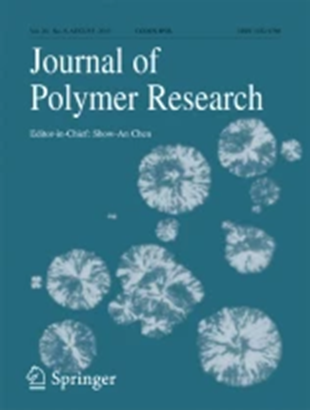Structural, optical, electrical, and dielectric properties of HPMC/PVP blend reinforced with I2O5 for optoelectronics and energy storage applications
Abstract
Herein, HPMC/PVP/I2O5 composite samples were prepared from the blend of two polymers, hydroxypropyl methylcellulose (HPMC) and polyvinylpyrrolidone (PVP), filled with different concentrations of iodine pentoxide (I2O5) as fillers by using the solution casting technique for advanced applications in optoelectronics and energy storage. The addition of I2O5 as a filler aims to enhance the optical and electrical properties of HPMC/PVP/I2O5 composite samples. Comprehensive characterizations were conducted to elucidate the structural, optical, and electrical/dielectric properties relationships and to assess the suitability of these materials for required applications. XRD scans demonstrate the semi-crystalline structure of the pure blend and show a decrease in the degree of crystallinity due to the incorporation of I2O5. UV-Vis spectroscopy indicated enhanced optical properties within the composites, characterized by a reduction in the indirect/direct optical energy gap of 4.74/5.14 eV for pure HPMC/PVP matrix to 2.61/3.64 eV for the polymeric matrix containing 5 wt% I2O5. Furthermore, the incorporation of I2O5 led to a significant increase in AC conductivity compared to the pristine polymer blend. The dielectric constant (ε′) increased in the low-frequency region due to space charge polarization. In the dielectric properties, space charge polarization revealed higher values, where the ε′ increased at lower frequency regions. Nyquist plots exhibited distinctive features, including semicircles at low frequencies and inclined lines at high frequencies. The decrease in the radius of these semicircles with increasing filler content suggests a correlation with the composite’s electrical properties. Electrical equivalent circuit models have described these observations. These findings collectively suggest the potential of these composites as bandgap tuners, optical sensors, tunable dielectrics, and promising candidates for solid polymer electrolytes. Their incorporation could significantly advance the performance of next-generation energy storage and conversion devices.

 求助内容:
求助内容: 应助结果提醒方式:
应助结果提醒方式:


